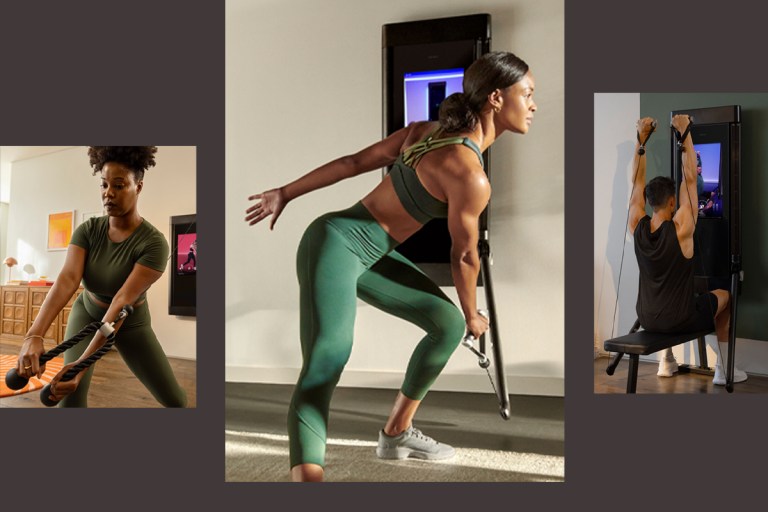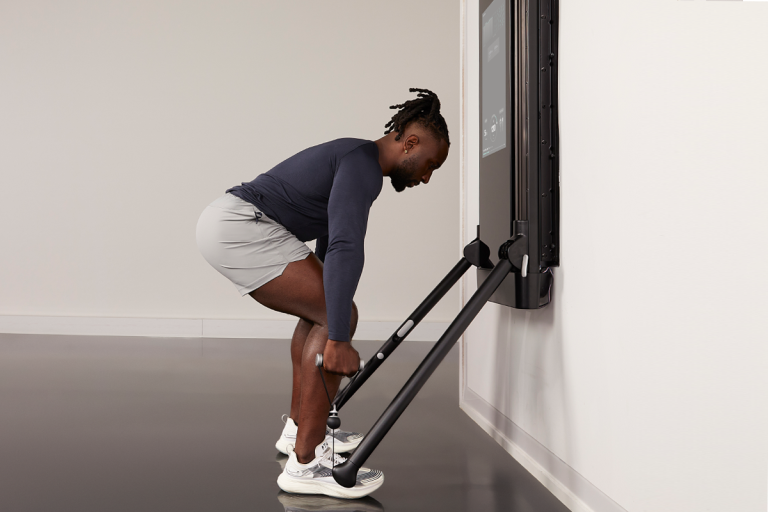Boost Your Strength and Intensity With Ladder Training
This rep-variation strategy can help you push more weight than you thought possible.

You don’t have to max out on every rep and every set to get bigger and stronger. In fact, the quickest path to building muscle is the one paved with tactics that keep you motivated—not necessarily gassed. Enter: ladder training. While ladder training isn’t the most complicated strategy, its simple structure is actually its greatest advantage. Playing with rep schemes through ascending, descending, or wave ladders can help you pack more volume into your workouts in less time, leading to impressive strength and hypertrophy gains.
What is Ladder Training?
Ladder training involves manipulating the number of reps you perform by increasing or decreasing with each set. Unlike in straight sets where you might do, for example, three sets of five reps, in ladder training you’d do three sets with a different number of reps in each one. Training in this style can either make you feel like you’re cranking your way up a hill or riding momentum as you sprint your way down one.
“Ladder training is a workout structure wherein repetitions of an exercise are systematically increased or decreased,” says Jacob Rauch, CSCS, PhD candidate, and performance manager of applied training science at Tonal. “Picture each set as a rung on a ladder. You start at one rung—usually with fewer reps—and climb to subsequent rungs with more reps or descend to fewer reps.”
According to Rauch, the load you use in ladder training can either stay consistent across sets or you can increase the load as the reps drop (or vice versa, decreasing the load as the reps increase). “But typically, the load is higher at lower reps and lower at higher reps,” he says. “You can adjust the ladder to train for a specific quality—like strength—where you emphasize higher loads, lower rep counts, and longer rest intervals. Or you can train for hypertrophy with higher reps counts and more work.” Rauch says it’s also possible to touch on multiple physical qualities within one session, which is what makes ladder training such a flexible and adaptable method.
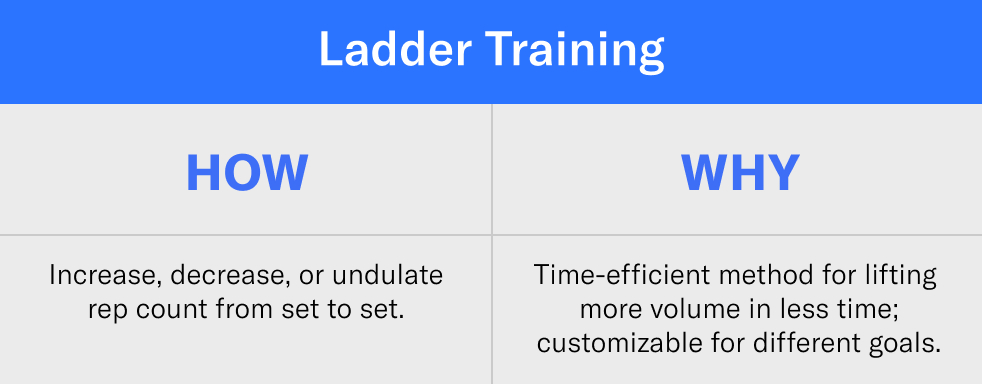
Experts say ladder training is one way to squeeze more work into your actual workout since you can systematically increase and decrease the number of reps without totally maxing out and fatiguing in each set. For example, if you go all-out in a set of pushups, you might be able to knock out 10 reps in the first set before resting for two minutes. But after that first maximum effort, you might only be able to pump out eight or six reps on the subsequent sets because you’re fatigued. In the end, you’ll have knocked out 24 total reps with three two-minute rest periods, or six total minutes of rest.
Now, switching up your style to a form of ladder training could help you get more reps in less time because rather than maxing out (and requiring more time to rest between sets), you can hold back on early sets and recover more quickly for the next round. For example, you might do five sets of pushups instead of three, starting at two reps, then increasing to four, and then six on the first three sets, and then from eight to ten on the final two. Because you’re likely feeling less fatigued, you only rest for 30 seconds in between. That’s 30 total reps with just two and a half total minutes of rest interspersed throughout.
What Are the Benefits of Ladder Training?
Ladder training is a customizable format that keeps your body and brain busy so you can build as much strength as possible in the time you have available. “In general, ladders are versatile, adaptable to various fitness levels, mentally engaging due to changing rep counts, and efficient for those with limited time,” Rauch says.
There are many different workout plans and training modalities for varying fitness goals. But no matter whether you’re looking to build biceps or strengthen your glutes, you’ll want to work on strength, hypertrophy, and endurance—and all three of those can be achieved through ladder training. While strength training increases the ability of your muscles to lift more weight, hypertrophy refers to an increase in the actual size of the muscle. Endurance, otherwise known as aerobic exercise, keeps your heart, lungs, and circulatory system healthy.
According to Rauch, there’s nothing necessarily magical about ladder training that makes it inherently superior for improving strength, hypertrophy, and endurance, but the biggest advantage to this method of training is that it can be adapted to suit different goals.
“Strength ladders will emphasize lower reps and higher intensities, whereas hypertrophy/endurance [training] will have ladders with [higher] reps and potentially shorter rest intervals,” he explains. “Strength-oriented ladders will have longer rest periods of two to five minutes between sets compared to hypertrophy and endurance-oriented ladders which have 30 seconds to two minutes between sets.”
The benefit of ladder training is that you can increase your volume by pumping out more reps with less rest while also increasing your load over the course of your workouts. You can also choose to focus on one objective at a time: either maximizing your volume or gradually adding resistance. Whatever your goals are, you can customize ladders to work for you.
What Are the Different Types of Ladder Training?
There are three different types of ladders: ascending, descending, and wave. Within those categories, you have the flexibility to choose how much you’d like to increase or decrease your reps between sets.
“Ladder training is a very flexible training method,” Rauch says. “In an ascending ladder, you start with a small number of repetitions and increase the number of reps with each set. In a descending ladder, you start with a high(er) number of repetitions and decrease the number of reps with each set.”
So, for example, an ascending ladder involving squats might start with two reps for the first set, increase to four reps in the next set, six in the third, etc. A descending ladder would be the opposite: starting with six squats on the first set, dropping to four on the next, and two on the third.
“You can also have wave ladders where you alternate high and low repetitions in subsequent sets,” Rauch says. In this case, you might go from 10 reps to two reps to six reps in the first three sets, and repeat the pattern for three more sets.”
Ladder Training on Tonal
With Tonal’s coach-led workouts, there’s no need to figure out a ladder rep scheme on your own. These expertly designed sessions all feature ladder structures designed to help you achieve your specific goals.
Strength and HIIT Remix – Coach Ackeem Emmons
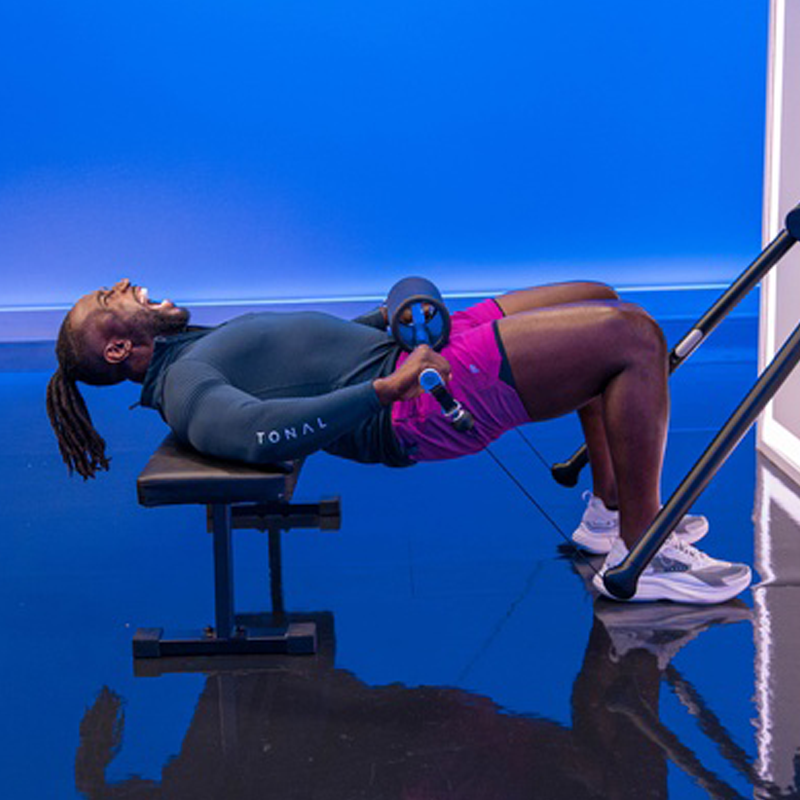
This variety-packed three-week program features several different training methods, including ladders, to both build stronger muscles and charge up your endurance. You’ll see both ascending and descending ladders in these workouts to see the benefits of both styles.
Power Hour: Ladder HIIT – Coach Kendall “Woody” Wood
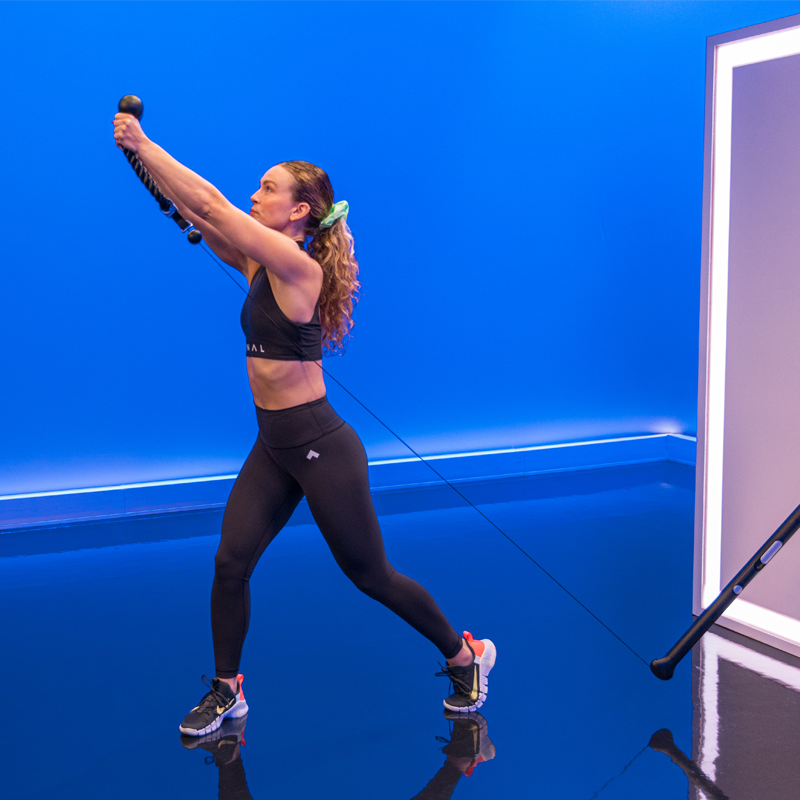
Climb up and down the rep ladder in this muscle-building, fat-burning workout that combines full-body lifts with bodyweight plyometrics.
Express Muscle: Upper Body – Coach Tanysha Renee

Your main lift in this workout is an upper-body pull with a descending ladder rep scheme to get in lots of reps in minimal time.
